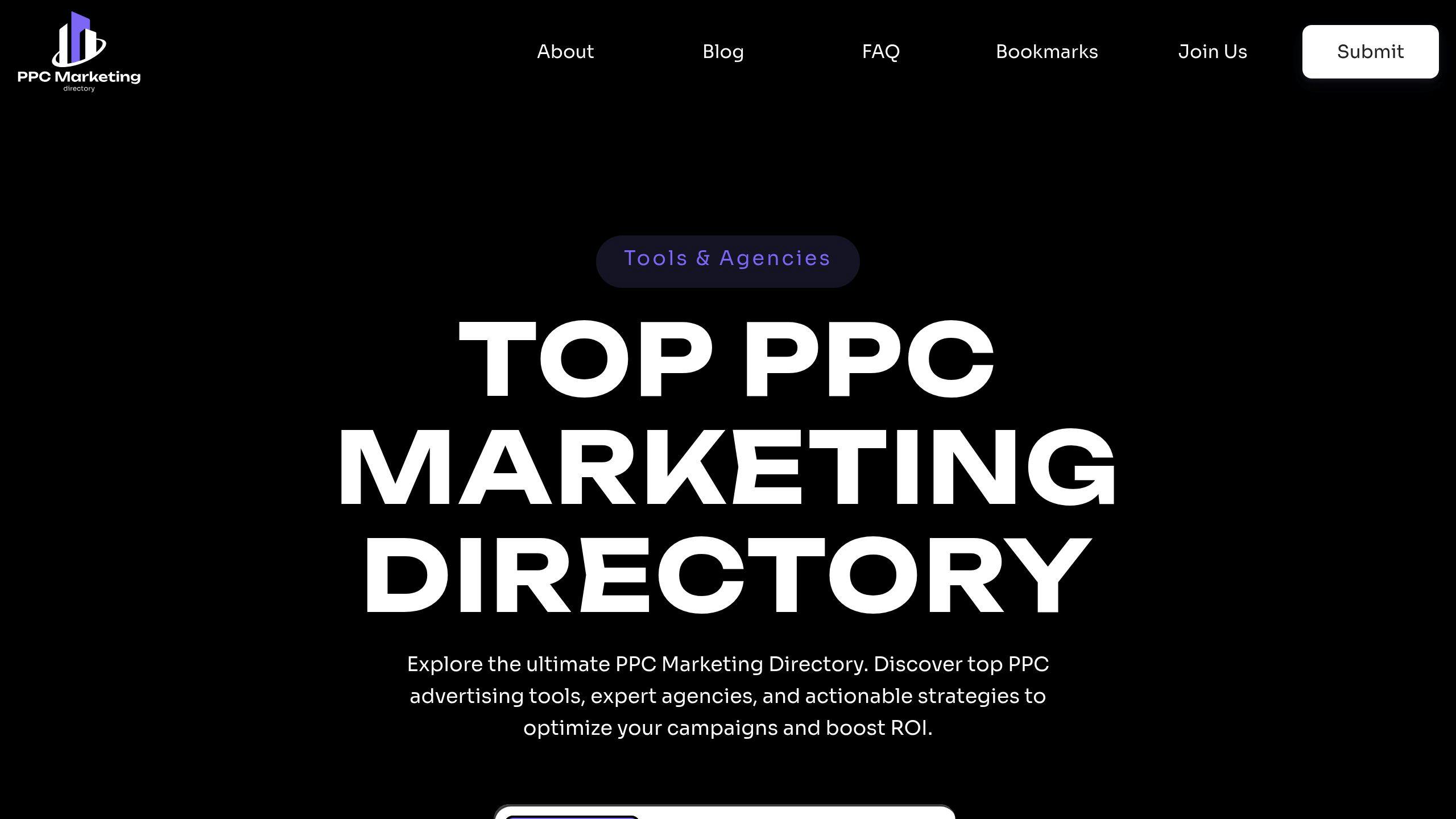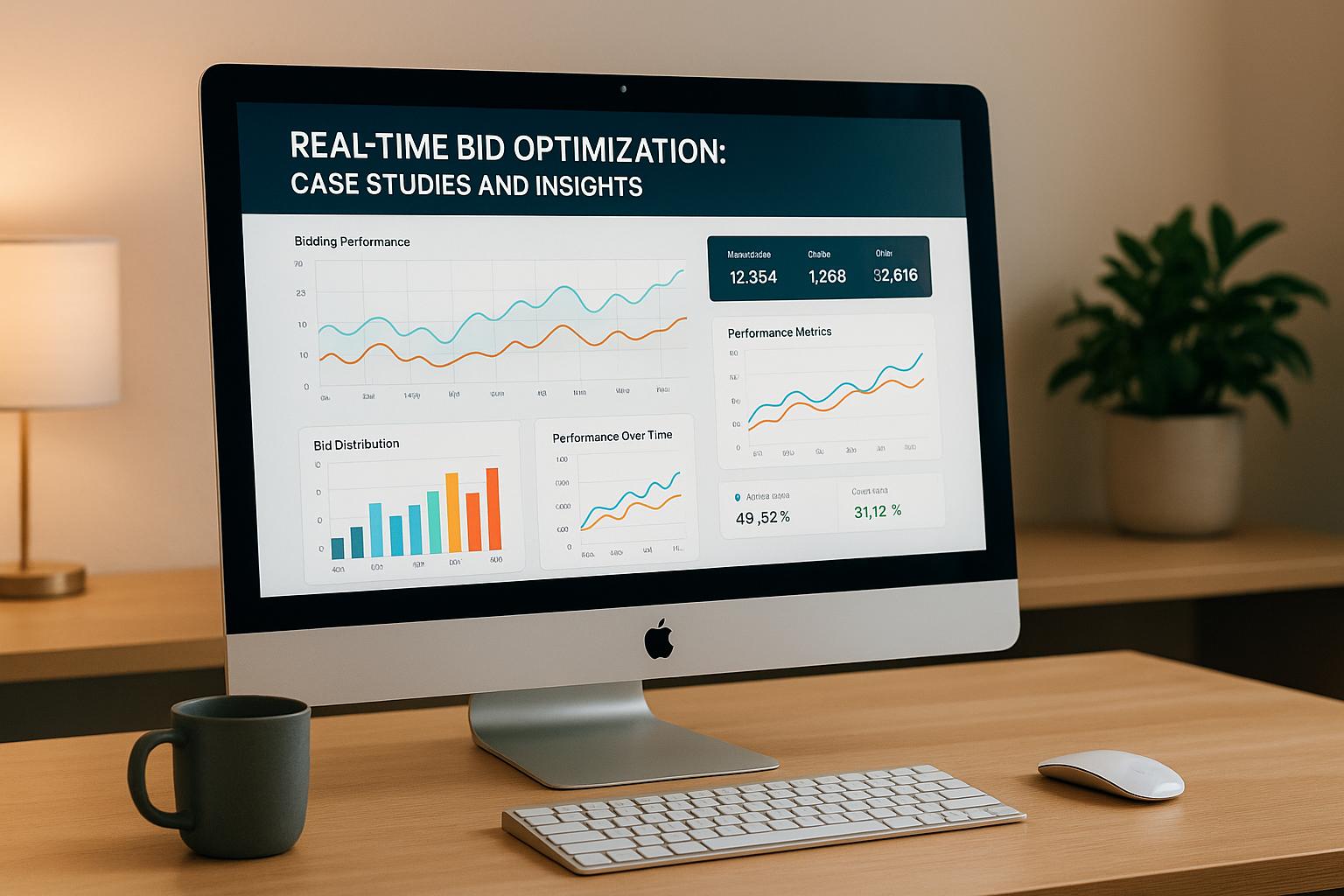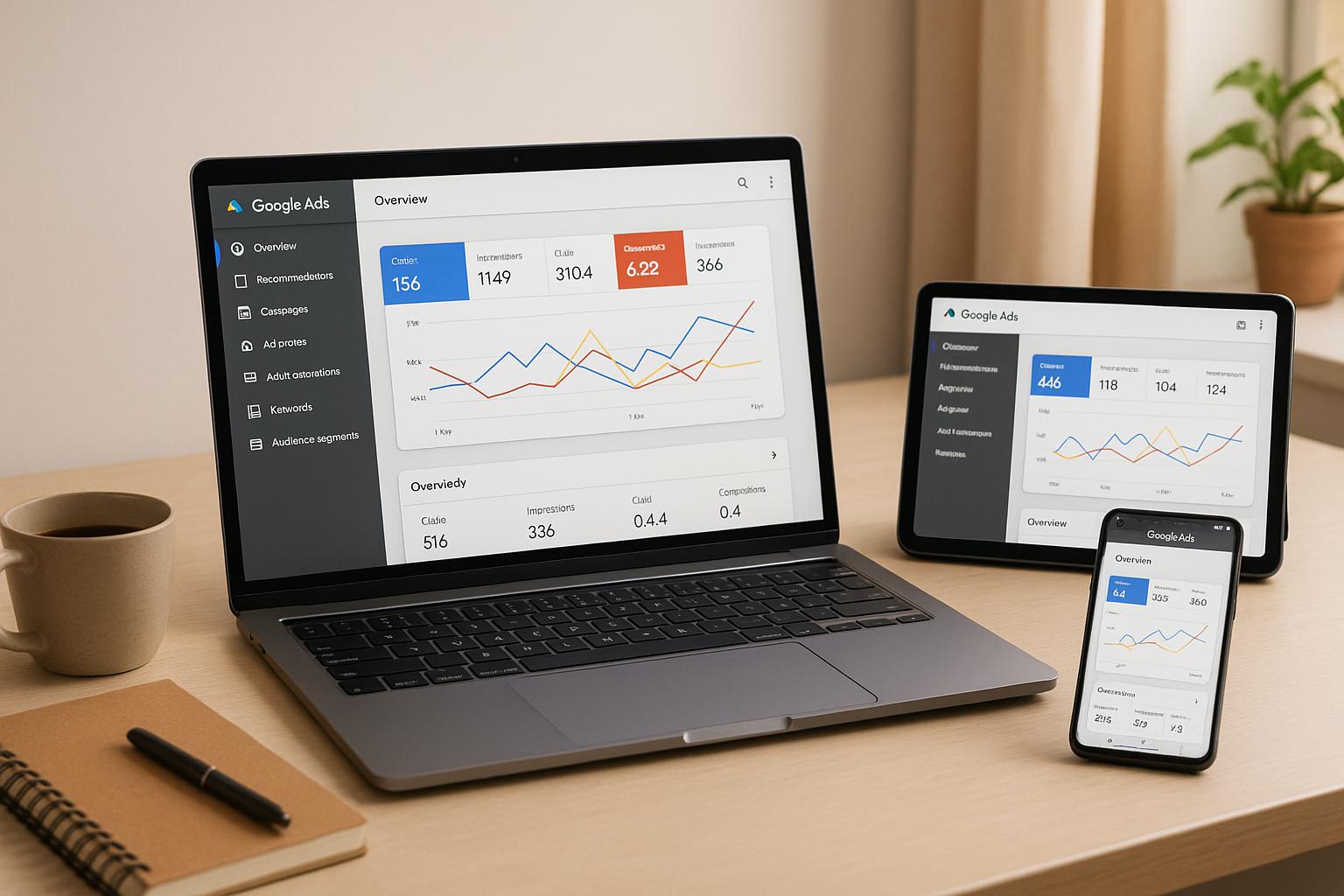Seasonal trends can make or break your PPC campaigns. Adjusting your budget based on consumer behavior during peak and off-peak periods ensures you maximize ROI and avoid wasted ad spend. Here's how to stay ahead:
- Why It Matters: Consumer behavior shifts seasonally, impacting cost-per-click (CPC), conversion rates, and competition.
- Key Steps:
- Analyze Past Data: Check historical metrics like CTR, CPC, and conversion rates to identify patterns.
- Forecast Demand: Use tools like Google Ads Performance Planner and Google Trends to predict seasonal spikes.
- Adjust Budgets by Season:
- Increase spending during high-demand periods (e.g., holidays, summer travel).
- Cut back during slower times to save resources.
- Distribute Across Platforms: Allocate budgets strategically between Google Ads, social media, and Bing Ads based on seasonal performance.
- Monitor and Optimize: Set up alerts for metrics like daily spend and ROAS, and make real-time adjustments.
| Season | Impact | Budget Tip |
|---|---|---|
| Holiday Season | High competition, 300-400% ROI | Increase bids and focus on high-converting keywords. |
| Summer | Travel demand up, CPC spikes | Allocate more to travel-related campaigns. |
| Off-Peak Periods | Low demand | Reduce spend and focus on efficiency. |
Pro Tip: Start planning early and use automation tools to manage bids and budgets effectively. Seasonal PPC success comes down to data-driven decisions and constant optimization.
Seasonality Adjustments in Google Ads: Why You Need to Use Them
Review Past PPC Data to Find Patterns
Looking at past campaign data is a smart way to adjust your seasonal budget. By studying previous trends, you can spot patterns in customer behavior and campaign results, helping you make better decisions for the future.
Focus on Seasonal Metrics
When diving into historical data, pay attention to these key performance metrics that can reveal seasonal trends:
| Metric | What to Look For | Why It Matters |
|---|---|---|
| CTR & Conversion Rate | Peaks and drops in clicks and purchases | Pinpoints times to prioritize spending |
| Cost-Per-Click (CPC) | Shifts in costs due to competition | Indicates when to allocate more budget |
| Ad Profitability | Fluctuations in profit margins | Guides smarter budget allocation |
For instance, a hotel might boost its summer campaign budget to take advantage of higher travel demand and maximize returns.
Tools to Simplify Data Analysis
Two must-have tools for analyzing seasonal trends are Google Ads Performance Planner and Google Analytics. Performance Planner helps you visualize past data and predict how budget changes might play out. Analytics goes deeper, showing insights like traffic changes, conversion paths, top-performing regions, and device trends.
"Starting early and being prepared gives you enough time to get your message in front of your audience for a longer time range, helping your business be top of mind in your prospects when they are ready to take action", says Aleesha Qureshi, Thrive's Paid Media Manager.
Keep an eye out for unusual data caused by factors like economic shifts or competitor moves, as these can skew seasonal trends. For more tools and expert advice to fine-tune your seasonal budget, check out the Top PPC Marketing Directory.
After spotting patterns in your historical data, you’ll be ready to plan and forecast for the next seasonal changes.
Predict Future Seasonal Budget Needs
After reviewing historical data, the next step is to forecast upcoming seasonal demands to plan your PPC budget wisely.
Build a Season-Based Timeline
Creating a timeline based on seasonal events helps you prepare for high-traffic periods. Identify key industry events and busy seasons - like Black Friday, summer vacations, or back-to-school shopping. This allows you to anticipate demand and adjust your budget accordingly. Did you know that 58% of consumers plan their shopping well before major sales events? Early campaign preparation is crucial to attract these early planners and maintain a competitive edge [1].
Research Market Trends
Understanding market trends can fine-tune your seasonal budget strategy. For instance, 75% of holiday shoppers track promotions throughout the season, showing the importance of staying flexible and making real-time adjustments [2].
Here’s what to analyze for better predictions:
- Consumer behavior patterns and when they’re most likely to convert
- Changes in competitor ad spend and strategies during busy periods
- Industry reports and forecasts relevant to your niche
- Broader economic factors that could impact seasonal sales
Tools like Google Trends can help you understand market behavior, while Google Ads Budget Simulator allows you to test different spending scenarios. These insights help you allocate funds effectively, ensuring you seize opportunities without overspending.
Once you’ve forecasted demand, you can focus on distributing your budget across campaigns and platforms for maximum impact during peak seasons.
sbb-itb-89b8f36
Adjust PPC Budgets for Each Season
Set Campaign Budgets and Bids
Dive into your historical data to pinpoint the best bid levels for each season. During busy times, focus on high-performing, product-specific keywords to get the most out of your budget. This is especially important for e-commerce during holidays when shoppers are ready to buy. Did you know that 75% of holiday shoppers actively track promotions? Make sure your bids stay competitive during these key moments [2].
Once you've fine-tuned your campaigns for seasonal demand, it's time to distribute your budget across platforms for the best results.
Split Budget Across Ad Platforms
Distribute your budget based on how platforms perform during different seasons. For instance, during peak periods, allocate a larger share to Google Ads (50-60%) while keeping a solid presence on social media (30-35%) and Bing Ads (10-15%). In quieter times, adjust these percentages to maintain efficiency and improve ROI.
| Season | Google Ads | Social Media | Bing Ads |
|---|---|---|---|
| Peak Season | 50-60% | 30-35% | 10-15% |
| Off-Peak | 40-45% | 40-45% | 15-20% |
| Transition | 45-50% | 35-40% | 15-20% |
Use the Top PPC Marketing Directory

For fully optimized seasonal campaigns, check out the Top PPC Marketing Directory. It offers tools to help with automated bid adjustments, tracking seasonal performance, and running A/B tests. This curated resource can help you allocate budgets effectively and scale campaigns during high-demand times.
Track and Fix Seasonal Campaigns
Set Up Budget Alerts
Keeping an eye on your seasonal campaign budget is key to avoiding overspending or missing out on opportunities. Use the "Alerts" section in your Google Ads dashboard to create custom notifications for critical metrics like daily spend, CPC, and conversion rates. These alerts allow you to spot performance issues early and address them before they hurt your ROI.
Here’s a handy setup for seasonal budget alerts:
| Alert Type | Metric | Threshold | Action Needed |
|---|---|---|---|
| Daily Spend | Budget Pacing | ±20% of target | Adjust daily budgets |
| Performance | Conversion Rate | -25% vs baseline | Review targeting or bidding |
| Cost Metrics | CPC Increase | +30% or higher | Reassess bid strategies |
| ROAS | Performance | Below target ROAS | Shift budget as needed |
Real-time tracking is especially important during busy seasons. Once alerts are set, act quickly to address any issues that arise.
Adjust Budgets on the Fly
When seasonal data shows problems, act fast and make targeted changes. Dive into your campaign metrics to pinpoint underperforming areas and find opportunities for improvement.
Here’s how to fine-tune your budget effectively:
- Shift funds from campaigns that aren’t performing well to those showing better results. Adjust bids to align with consumer trends.
- Keep an eye on competitor activity, especially during high-demand periods.
- Use automation tools to handle adjustments efficiently and save time.
AI-powered tools can also help refine your bidding and budget strategies in real-time, ensuring your campaigns stay effective as seasonal conditions change [2].
Conclusion: Main Points for Seasonal PPC Budgets
Key Steps for Budget Planning
Seasonal PPC budgeting works best when driven by data. On average, businesses see a return of about $8 for every $1.60 spent on Google Ads - if campaigns are managed correctly [1]. But poor planning can lead to waste, with up to 41% of ad spend being ineffective [2].
To create a solid seasonal PPC strategy, focus on these three key areas:
-
Analyze Data and Spot Trends
- Look at past performance data.
- Pinpoint seasonal patterns and opportunities.
- Set baseline metrics for comparison.
- Allocate Budgets Strategically Conversion rates differ by industry - healthcare averages 5.6%, while B2B tech sees about 1.7% [1]. Knowing these benchmarks can guide your budgeting decisions and help you set up automated rules for peak times.
-
Track and Adjust Performance
Keep an eye on these critical metrics:
Metric Type Target Range Adjustment Trigger Daily Spend ±20% variance Budget reallocation ROAS Minimum 400% Campaign optimization
Explore PPC Tools
Once you’ve nailed the basics, using the right tools can take your seasonal PPC campaigns to the next level. The Top PPC Marketing Directory offers resources for:
- Campaign management and bid adjustments.
- Keyword research and competitor analysis.
- Performance tracking and A/B testing.
Since 75% of holiday shoppers start researching purchases early [1], staying visible during peak times is crucial. These tools can help you manage budget shifts effectively and stay ahead during high-demand periods.
FAQs
How do you forecast PPC results?
To forecast PPC results for seasonal trends, you need to dive into historical performance data and market trends. This helps you make smarter budget decisions for seasonal campaigns.
| Data | Purpose | Source |
|---|---|---|
| Impressions | Spot seasonal visibility patterns | Campaign history |
| Bid data | Understand cost changes over time | Previous campaigns |
| Click-through rates | Gauge audience engagement | Google Ads reports |
| Conversion metrics | Assess ROI patterns | Analytics platform |
If you don’t have historical data, don’t worry. Industry benchmarks and competitor analysis can help you get started. However, the best forecasting method relies on year-over-year data across three key timeframes.
To boost accuracy, try these steps:
- Conduct seasonality tests year-over-year.
- Analyze monthly trends in Google Ads.
- Watch for major shifts in performance metrics.
This process helps you pinpoint real seasonal trends, so you can allocate your PPC budget wisely. The goal? Avoid over- or under-spending, maximize ROI during busy periods, and stay efficient when things slow down.


